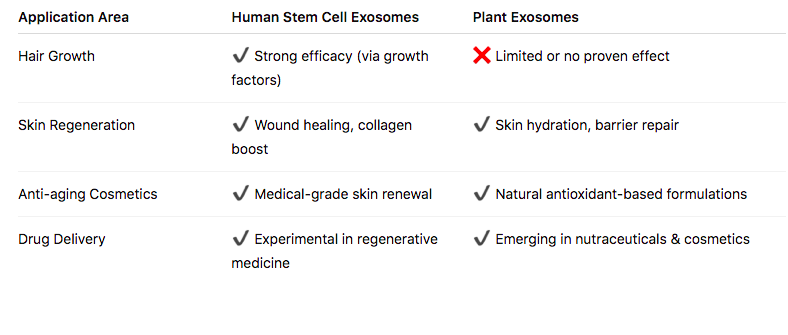Since the groundbreaking discovery in 2013 by three Nobel Prize-winning scientists that extracellular vesicles (EVs)—including exosomes and microvesicles—serve as vital mediators of intercellular communication, exosome research has advanced rapidly across multiple fields. These include oncology, regenerative medicine, immune modulation, neurology, and anti-aging therapies.
Exosomes are nanosized vesicles, typically 30–150 nanometers in diameter, that are secreted by cells through a highly regulated process. Formed within the intracellular endosomal system, they are later released into the extracellular environment. These vesicles are enclosed by a lipid bilayer membrane and carry a rich cargo of proteins, nucleic acids, lipids, and other biologically active molecules.
Initially dismissed as mere cellular waste, exosomes are now recognized as critical mediators of biological signaling, enabling the transfer of functional molecules between cells and tissues. They play essential roles in immune responses, cell proliferation, tissue development, angiogenesis, aging, and tumor progression. Because of their natural ability to transport bioactive substances, exosomes are increasingly viewed as promising tools for disease diagnostics, targeted drug delivery, and therapeutic intervention.
In recent years, the application of exosome technology in skincare and haircare has become one of the most exciting innovations in the beauty and wellness industry. A wide range of exosome-based products has entered the market, offering advanced solutions for skin rejuvenation and hair restoration. However, it’s important to note that exosomes can be derived from various sources—including human, plant, and animal cells—each with unique characteristics and functions.
So, what sets these exosome types apart? Understanding their differences is key to unlocking their full potential in cosmetic and clinical applications.
1. Human Stem Cell-Derived Exosomes
Human exosomes are typically sourced from umbilical cord tissue, adipose (fat) tissue, or bone marrow. Among these, umbilical cord-derived exosomes are considered the most favorable due to their high biocompatibility, pluripotency, and regenerative potential. However, their production involves complex processing and stringent safety standards, making them more costly than other types.
2. Plant-Derived Exosomes
Plant-based exosome products are readily available and offer an attractive, non-animal alternative. However, due to limited scientific validation, they are often referred to as “exosome-like vesicles” in global classifications. Moreover, variability in plant species and extraction methods can lead to inconsistencies in potency and biological activity across different batches.
3. Animal-Derived Exosomes
Exosomes sourced from animals may exhibit partial compatibility with the human system and are sometimes used in research and therapeutic development. Nevertheless, they carry a higher risk of triggering allergic reactions or immune responses, which raises concerns about safety and tolerability for human applications.
1. Structural Differences
Plant derived Exosomes
Plant derived exosomes are primarily categorized into two types:
-
Small Vacuoles (50–150 nm): These contain enzymes related to plant cell wall synthesis, signaling molecules, and genetic material (RNA/DNA).
-
Mucus Vacuoles (200–1000 nm): Larger in size, these can be directionally transported via microtubule dynamics, facilitating targeted intracellular communication.
Human stem cell derived Exosomes
Human stem cell derived extracellular vesicles fall into two categories:
-
Exosomes (30–1000 nm): Contain microRNAs, messenger RNAs, and proteins related to disease progression, immunity, and infection.
-
Apoptotic Bodies (50–5000 nm): Released by dying cells, these vesicles contribute to tissue repair and immune modulation.
2. Origin and Biogenesis
Plant Exosomes
Plant exosomes are primarily formed in the Golgi apparatus or cytoplasm, originating from the plasma membrane or endoplasmic reticulum. Additionally, symbiotic microbes (such as fungi and bacteria) present in plant tissues can also release exosomes. Derived from plant cells such as grape, ginseng, aloe, ginger, or green tea.
Human Exosomes
Human exosomes are typically formed through inward budding of the cell membrane and are released into the extracellular space. Immune-related cells like macrophages and B cells are known to produce exosomes, especially during immune or inflammatory responses. Derived from human mesenchymal stem cells (MSCs) or other types of stem cells (e.g., adipose, bone marrow, umbilical cord).

3. Biological Functions
Plant Exosomes
Plant exosomes are involved in:
-
Provide antioxidant, anti-inflammatory, and anti-aging effects.
-
Mediating responses to biotic and abiotic stressors
-
Support skin barrier function and calm irritated or sensitive skin.
- Mostly used in cosmeceuticals and topical skincare.
Human Exosomes
Human exosomes contribute to:
-
Cell-to-cell communication through extracellular signaling
-
Tissue repair and regeneration
-
Immune system regulation
-
Influencing the progression of various diseases
-
Carry growth factors (e.g., VEGF, HGF, TGF-β) that trigger cell proliferation, angiogenesis, and anti-inflammation.
- Ideal for medical and aesthetic use (e.g., skin rejuvenation, hair regrowth, wound healing).
4. Applications

From a scientific standpoint, exosomes derived from human umbilical cord stem cells offer significant advantages in terms of compatibility and safety. Because these extracellular vesicles originate from human cells, their lipid bilayer membranes closely resemble those of the recipient’s own cells, thereby minimizing the risk of immune rejection or adverse reactions.
Moreover, these exosomes are naturally enriched with a diverse array of regenerative bioactive factors, allowing them to mimic the therapeutic effects of stem cell therapy—without introducing whole cells into the body. As umbilical cord stem cells are young and undifferentiated, they exhibit greater genetic stability and a lower risk of mutations, enhancing both the safety and efficacy of the exosomes they produce.
Leave a comment